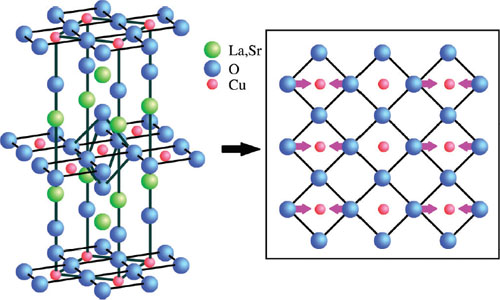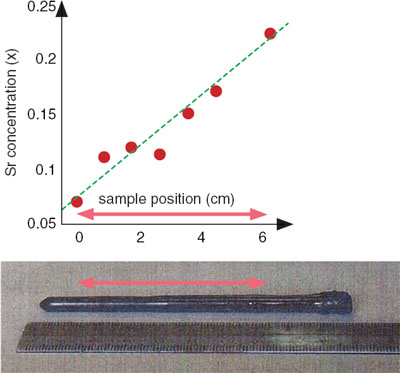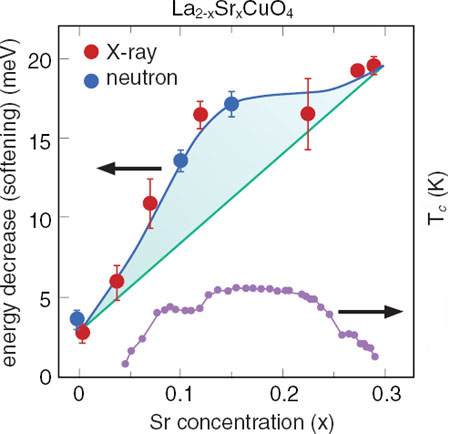Since the discovery of superconductivity in 1911, its applications have been investigated intensively. Since superconductivity occurs only at low temperatures, the effort to increase the transition temperature (Tc) has continued. In particular, the discovery of high Tc superconductors in 1986 was of great significance.
Many high Tc superconducting substances are perovskite cuprates having CuO2 planes (Fig. 5-4). Both crystal and spin fluctuations in the plane are believed to play an important role in the appearance of superconductivity. However, even now, there is no consensus on the mechanism that makes this possible.
We have studied lattice vibrations (phonons) in high Tc superconducting by inelastic X-ray scattering at SPring-8. To date, phonons usually observed by inelastic neutron scattering require much larger sample volume than inelastic X-ray scattering.
We prepared La2-xSrxCuO4 having a strontium (Sr) concentration gradient change with the help of the Institute for Materials Research (IMR), Tohoku University (Fig. 5-5), and observed in a wide range of x from insulator to metal phases via superconducting phase by only changing the measurement location. The phonon energy in a bond-stretching mode, which contains vibrations of oxygen atoms in the CuO2 planes, was found to become lower than expected in the superconducting phase (Fig. 5-6). This means that there is strong relationship between superconductivity and this phonon. This discovery will encourage the study of the role of phonons in the mechanism of high Tc superconductivity. |


